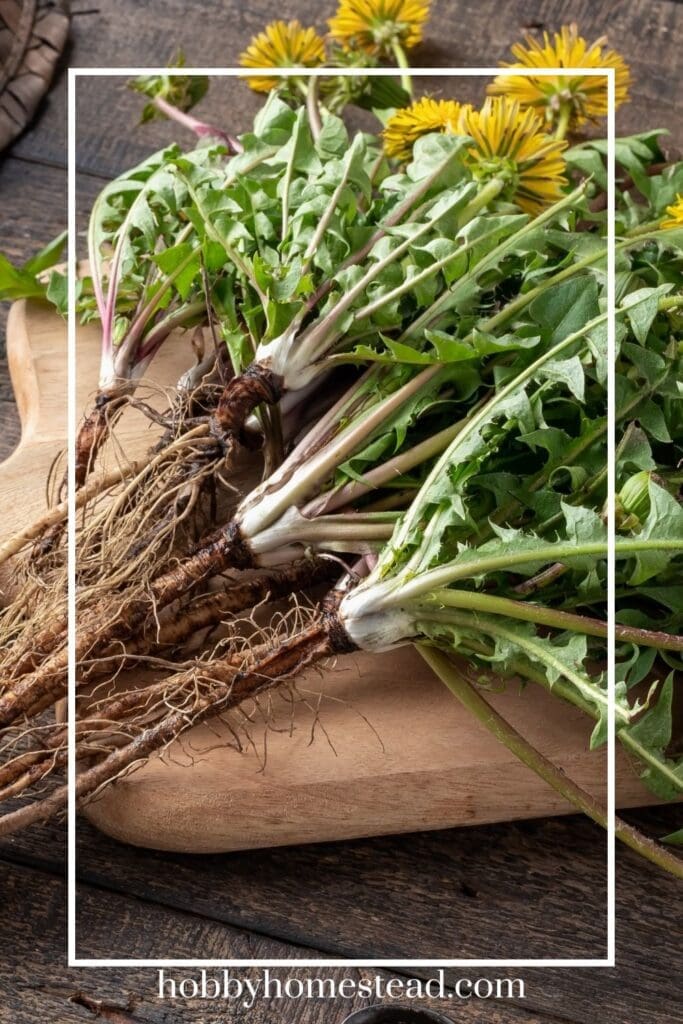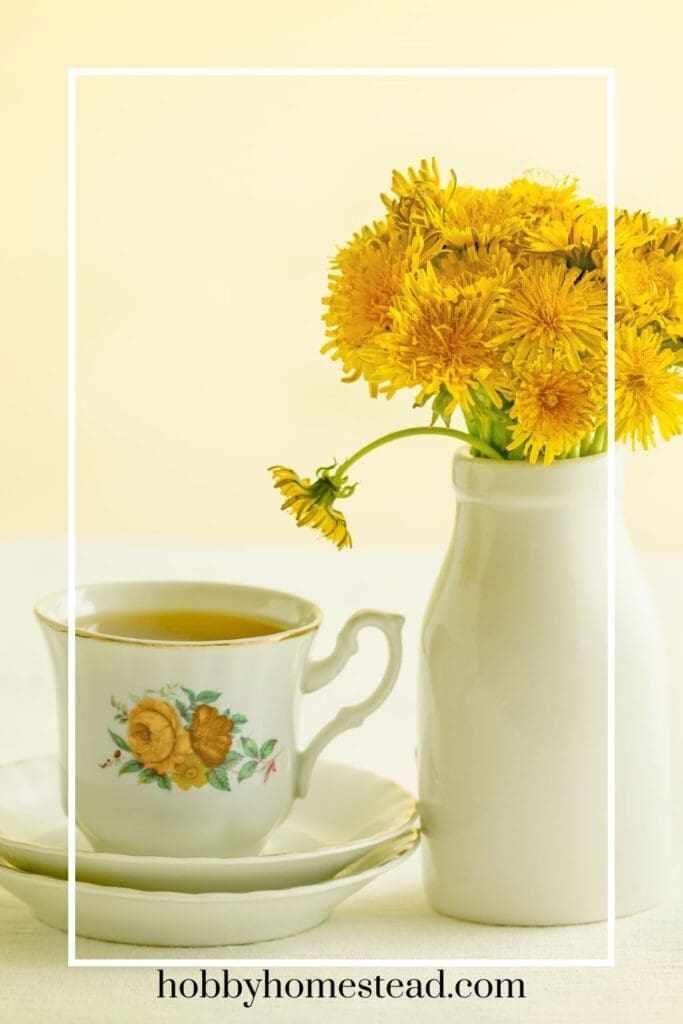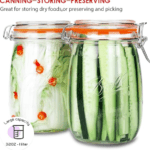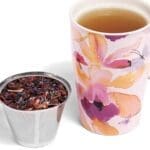Last updated on August 3rd, 2025 at 11:29 am
Today, we’re sharing our step-by-step guide on making homemade dandelion tea, 3 different brews. If you’ve ever looked at those bright yellow flowers scattered across your lawn and thought of them as just pesky dandelions, it’s time for a mindset shift. Those little blooms—Taraxacum officinale, to be exact—are part of the asteraceae family. They hold a treasure trove of uses in traditional medicine. One of the best ways to enjoy their numerous health benefits is in a soothing cup of homemade dandelion tea.
We’ll walk you through how to make your own dandelion tea from scratch, explain the different types of dandelion tea, and share the potential benefits of this vibrant medicinal plant.

Types of Dandelion Tea: More Than Just a Flower
There are several different ways to enjoy dandelion tea depending on the part of the dandelion you use. Each has its own flavor and health profile:
- Dandelion Root Tea. Made from fresh roots or dried roots. When roasted, it’s often called dandelion coffee, a coffee substitute with a deep, earthy flavor.
- Dandelion Flower Tea. Brewed from the flower heads, flower petals, or fresh flowers. This type has a sweet flavor and is a wonderful way to enjoy the vitamin C and antioxidant properties of dandelions.
- Dandelion Leaf Tea. Made from tender leaves or dandelion greens, this tea is a natural diuretic that may help with fluid retention and liver function.
Harvesting Dandelions: When and How
The best time to harvest dandelions is early spring before the plant matures and becomes bitter. For the best flavor and nutritional benefits of dandelions, pick from your own garden or wild areas away from pesticides and pollution.
What You’ll Need:
- Bright yellow flowers for dandelion flower tea
- Dandelion leaves of the plant for dandelion leaf tea
- Roots of the plant (washed and chopped) for dandelion root tea
Dry your plant parts in a dry place out of direct sunlight for later use, or use them fresh.
How to Make Dandelion Tea (3 Ways)
As an Amazon Associate I earn from qualifying purchases.
Equipment
Ingredients
Dandelion Flower Tea Ingredients
- 2 Tablespoons Fresh Dandelion Flowers or dried petals
- 1 Cup Boiling Water
- Optional: maple syrup raw honey, or lemon balm for flavor
Dandelion Leaf Tea Ingredients
- 1 Tablespoon Dandelion Leaves fresh or dried
- 1 Cup Hot Water
Roasted Dandelion Root Tea Ingredients
- 1 Tablespoon Roasted Dandelion Root or raw roots dried and roasted
- 1 Cup Boiling Water
Instructions
Dandelion Flower Tea Instructions:
- Rinse the flower heads well.2 Tablespoons Fresh Dandelion Flowers
- Place in a tea ball or teapot.
- Pour over boiling water and steep for 10–15 minutes.1 Cup Boiling Water
- Strain, sweeten to taste, and enjoy.
- This floral tea has a mild, sweet flavor, and is a great way to introduce herbal teas into your day.Optional: maple syrup
Dandelion Leaf Tea Instructions
- Chop leaves into small pieces.1 Tablespoon Dandelion Leaves
- Steep in hot water for 10 minutes.1 Cup Hot Water
- Strain and sip.
Roasted Dandelion Root Tea Instructions
- Roast chopped roots in an oven at 350°F for 10–15 minutes.1 Tablespoon Roasted Dandelion Root
- Steep in boiling water for 10 minutes.1 Cup Boiling Water
- Strain and serve.
Notes
Iced Dandelion Tea Option
To turn any of the above into a refreshing iced tea, simply brew it, let it come to room temperature, and chill. Serve over ice cubes with a slice of lemon or fresh mint.Nutrition

Harvesting Dandelions for Tea: From Yard to Teacup
One of the most rewarding parts of making your own dandelion tea is knowing it came straight from your land. On the homestead, these bright yellow flowers aren’t just weeds. They’re a treasure trove of medicinal properties. Harvesting dandelions is a great way to connect with nature and make use of an often-overlooked medicinal plant.
Best Time to Harvest
The best time to gather dandelions is in the early spring, when the flower heads are vibrant, the tender leaves are still young and mild, and the roots of the plants are rich in nutrients. Harvest in the morning after the dew has dried but before the sun gets too hot. Look for areas of your own garden or pasture that haven’t been sprayed with chemicals or exposed to heavy foot traffic.
What Parts to Harvest
Each part of the dandelion has different uses and flavors, so it’s worth collecting all of them:
- Dandelion Flowers. Pick the fully open fresh flowers for a light, sweet flavor in dandelion flower tea. Pluck the flower petals if you want to avoid the slightly bitter green base.
- Dandelion Leaves. Snip dandelion greens early in the season when they’re less bitter. These are perfect for dandelion leaf tea or even adding to salads and sautés.
- Dandelion Roots. Use a garden fork or small shovel to carefully dig up the fresh roots. Choose large, thick roots for the best flavor. Wash thoroughly, chop into small pieces, and either use raw, dry them for later use, or roast for roasted dandelion root tea.
Cleaning and Drying
Rinse all parts of the plant in cool water to remove dirt and insects. Pat dry and lay them out in a dry place with good airflow, away from direct sunlight. Let the plant parts dry completely before storing.
Store dried roots, leaves, and flowers in labeled glass jars for later use in your teas and other herbal remedies.
Pro tip. Dry extra roots to grind into your own homemade dandelion coffee or to add to tinctures and herbal teas.
A Word on Sustainability
Always harvest responsibly. Leave some dandelion plants behind so they can continue to support pollinators and regenerate next season. It’s one of the best ways to maintain a self-sufficient, medicinal herb supply right in your backyard.

How to Make Dandelion Tea Taste Better
Dandelion tea has an earthy flavor that can be a bit strong or bitter, especially when made from the roots of the plant or dandelion greens. Fortunately, there are different ways to mellow and enhance the flavor without losing the health benefits of dandelion tea.
Flavor-Boosting Additions:
- Raw honey or maple syrup. Natural sweeteners that complement the tea’s sweet flavor without overpowering its herbal essence.
- Lemon balm. Adds a citrusy note.
- Fresh mint or fresh basil. Brings a refreshing twist to iced tea versions.
- Cinnamon stick. Adds warmth and a hint of spice, especially delicious with roasted dandelion root tea.
- Citrus peel. A strip of lemon or orange zest lifts the flavor.
- Apple slices. Toss a few into your teapot for a subtle fruity sweetness.
- Banana peels. Believe it or not, boiling banana peels with dandelion root tea can reduce bitterness and add a unique sweetness, plus extra potassium.
You can also combine dandelion root tea with other herbal teas like chamomile or ginger to balance the flavor. Steeping for less time or blending flower petals with leaves of the dandelion plant also results in a lighter taste.
Best Time of Day to Drink Dandelion Tea
Because of its natural diuretic properties and gentle support for the liver function and digestive system, the best time to enjoy dandelion tea depends on your personal goals.
Morning
Start your day with hot water and a cup of dandelion leaf tea or dandelion flower tea to gently wake up your immune system. Many homesteaders find it’s a wonderful way to kick off the morning without caffeine.
Afternoon
Sipping iced tea made from dandelion flowers or leaves is refreshing and helps maintain hydration.
Evening
You might want to avoid drinking dandelion root tea too late in the evening. Since it can increase urination, it might interrupt your sleep. That said, a small cup of lightly steeped flower heads with calming herbs like lemon balm can make a soothing nighttime tea.

Nutritional Benefits of Dandelion Tea
Drinking dandelion tea is a wonderful way to incorporate medicinal herbs into your routine. It’s long been used in herbal remedies and traditional medicine for its ability to:
- Support liver function and detoxification
- Act as a natural diuretic, reducing fluid retention
- Support gut health and the digestive system
- Help balance blood sugar levels
- Promote weight loss
- Provide antioxidant properties that fight free radicals
- Relieve skin inflammation
- Potentially inhibit cancer cells and bacterial infections
- Assist with urinary tract infections
Side Effects and Precautions
While dandelion is one of the most widely used medicinal plants, it’s important to be cautious. According to WebMD, it may cause allergic reactions in people sensitive to Asteraceae family plants. It could interact with some prescription drugs. And it might lead to upset stomach in some users.
Always consult a medical professional before using dandelion tea for medical conditions. And as with anything, use in moderation.
Making your own dandelion tea from the whole plant—roots, leaves, and flowers—is not only a great way to reduce waste. But also, a step toward living more in tune with nature. With its variety of flavors, potential benefits, and health benefits of dandelion tea, this golden brew is a delightful addition to any herbal routine.







Thanks for this information.